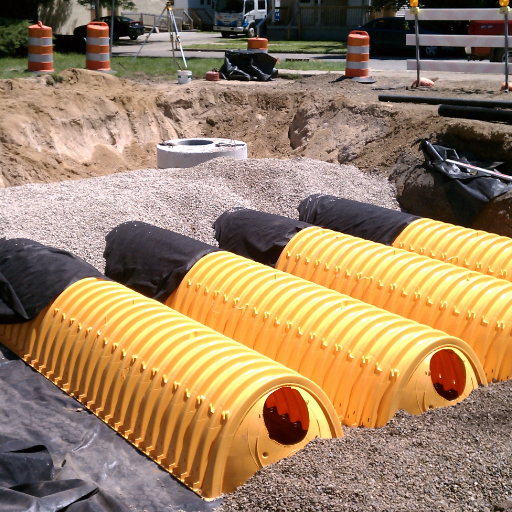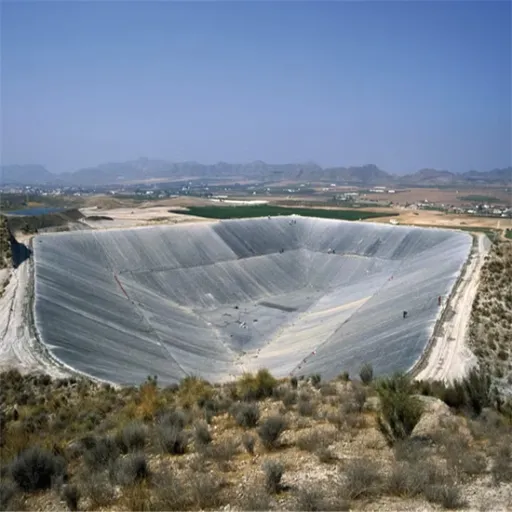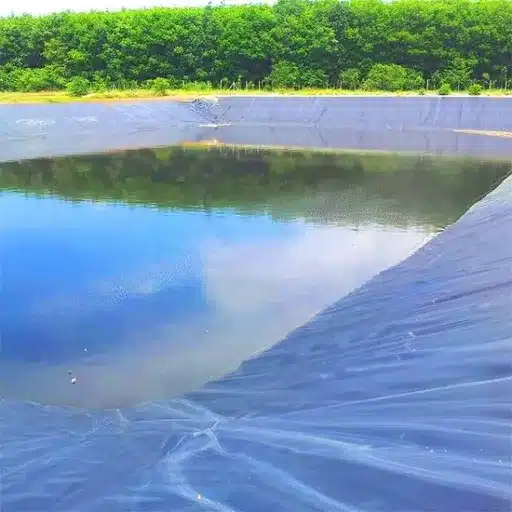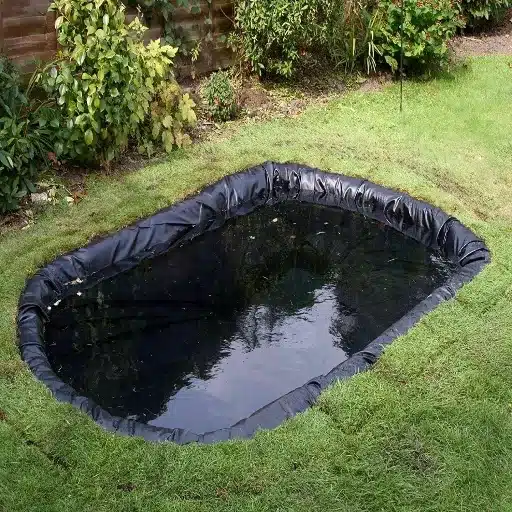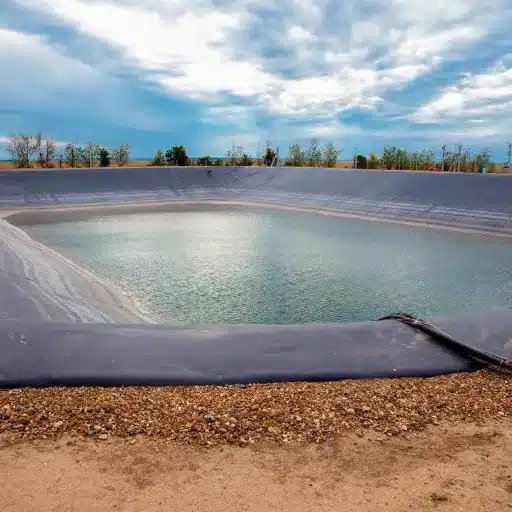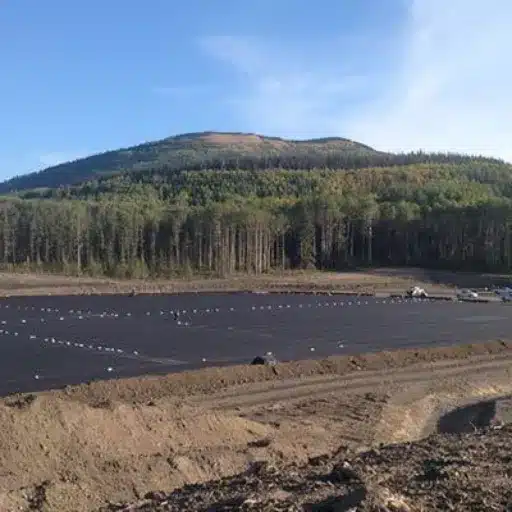An essential feature of modern infrastructure design is stormwater management in response to urbanization and its associated challenges arising from erratic weather patterns. With increasing impervious surfaces and changes in climate, the need for these critical solutions has maximized. Detention and retention systems come into stormwater mitigation options that control runoff, avert flooding hazards, and treat water quality. This paper takes a closer look at the distinctions between these systems, their modern design iteration, and the benefits accrued to sustainable water management. To a developer, municipality, or environmentally conscious planner, this material should serve as useful information in protecting the communities and their ecosystems through intelligent stormwater management.
Introduction to Stormwater Management
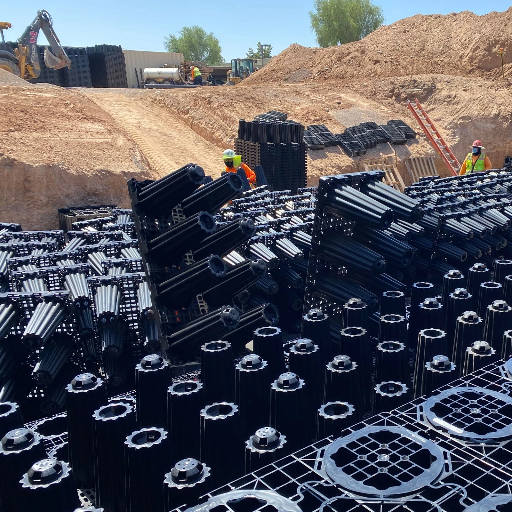
In simple terms, stormwater management involves capturing rain runoff to prevent flooding, erosion, and to improve water quality. It encompasses the design, construction, and maintenance of drainage systems, retention basins, and green infrastructure to intercept, treat, and efficiently discharge runoff into nearby natural waterways. The end goal is to protect urban areas and the environment from the negative impacts of stormwater that is allowed to flow uncontrolled.
The Need for Stormwater Management in Urban Areas
Due to the abundance of impervious surfaces-technically meaning impermeable, such as roads, rooftops, and parking areas-it is hard for urban settings to manage stormwater-related troubles. There is no way for surfaces to allow water flow to percolate naturally into the ground while the runoff volumes increase exponentially. Figure in that U.S. Environmental Protection Agency (EPA) has recently counted stormwater runoff from urban areas as rising sediment, oil and other contaminants that account for close to 55% of surface water pollution. The Contaminants include sediment, oil, heavy metals, and others that degrade aquatic ecosystems.
Proper stormwater management will alleviate pollution and control hazards due to urban flooding. Green infrastructure types host great potential in reducing runoff. With respect to permeable pavements, partially pore-filled with sediment, rainfall, and concrete dilution, roughly 80% runoff reduction can be utilized for green roofs and rain gardens in high rainfall zones. Retention ponds, in addition to providing the opportunity for toxicity attenuation, overflows from potential sewer inputs.
Cities such as Portland, OR, and Philadelphia, PA, have proceeded well in the subject of stormwater management through the sustainable lens. Philadelphia’s Green City, Clean Waters program aims at reducing stormwater pollution into waterways by 85% in 25 years. However, the initiative has now diverted tens of millions of gallons of stormwater every year from the sewer system.
These examples highlight that, for the effective management of stormwater, innovative problem-solving and data-driven approaches need to be harnessed to protect the urban environment and save water resources for the next generation.
Basic Terminology of Stormwater Management
Green Infrastructure
Green infrastructure comprises systems and practices using or mimicking natural processes to manage stormwater. Examples are rain gardens, green roofs, permeable pavements, and bioswales which will capture and treat stormwater at the source. Recent data shows that maybe with this plan Philadelphia, under “Green City, Clean Waters,” has invested over $2.4 billion into green infrastructure projects, thus helping to lower greatly stormwater runoff and improving water quality.
Combined Sewer Overflows (CSOs)
When they drain wastewater and stormwater together, such is the case of combined sewer overflows in older sewer systems. When it rains heavily, these sewers are unable to cope and will overflow into a river or a waterway, bringing untreated raw sewage with them. Approximately 850 billion gallons of untreated wastewater and stormwater are discharged annually in the United States because of CSOs, states the EPA. To mitigate this problem, many cities are now looking into storage tanks, tunnels, and green solutions.
Low Impact Development (LID)
Low Impact Development is a sustainable approach to land development to lessen stormwater runoff. It manages stormwater by decreasing impervious surfaces and conserving natural landscapes. For example, studies have proved that LID practices can reduce stormwater runoff volume by as much as 80%, thus making urban areas highly resilient to flood and at the same time protect water quality.
Stormwater Harvesting
Stormwater harvesting refers to the collection and storage of runoff aimed at reuse-in irrigation or in industrial processes. New advances in stormwater harvesting systems, particularly within Australia and parts of the U.S., offer hope for the crippling issue of water scarcity. For instance, Melbourne’s stormwater harvesting schemes can collect enough water every year to supply more than 5,000 households.
Advanced Monitoring and Data Analytics
New technologies, like IoT sensors and real-time monitoring, promise to revolutionize the management of stormwater. They provide accurate data on water levels, flow rates, and pollutants, thus allowing for proactive management. Following in the footsteps of smart stormwater systems in Chicago and Singapore, they mitigate flood risks by using predictive analytics and dynamic control systems.
Prioritizing the juxtapositions between the old and the new, these strategies become the showpieces representing the ways in which urban realms can effectively counter the stormwater dilemma and ensure the environment’s wellbeing and climate-change adaptability.
Overview of Detention and Infiltration Systems
Detention and infiltration systems are crucial for sustainable stormwater management aimed at reducing flooding and improving the environment’s water quality. The detention systems are designed to hold stormwater temporarily and release it at a low rate so as to ease the pressure on the municipal drainage system. Their counterpart, infiltration systems are designed to catch stormwater and discharge it back into the ground for aquifer recharge and natural hydrology promotion.
Depending on the design and placement, recent studies and smart city reports show that detention basins can bring about a 30% to 50% decrease in peak runoff volumes in urban land. On the other hand, infiltration concepts such as permeable pavements and rain gardens have increased groundwater recharge rates by up to 60%. Large-scale infiltration projects in cities like Portland and Copenhagen have led to the decrease in urban waterlogging and, hence, have improved urban ecosystems.
The recent enhancements in these systems include an integrated sensor system for monitoring water levels and adaptive designs enabling the accommodation of extreme precipitation events that are attributed to climate change. These improvements become more significant as urban populations swell and rainfall patterns begin to show high variability-an indication of the central role that detention and infiltration systems play in urban stormwater management.
Understanding Stormwater Storage Systems
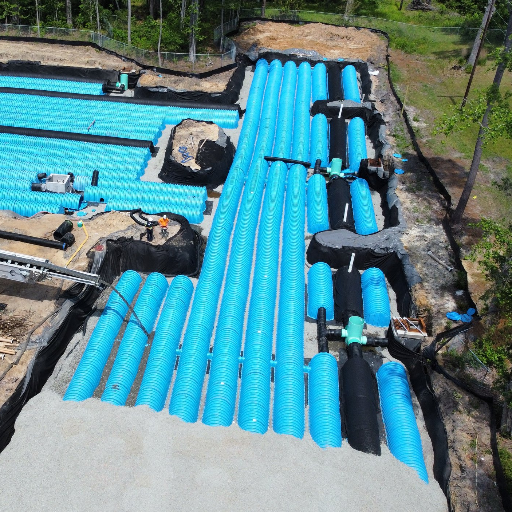
Stormwater storage systems are installed to water log excess rainwater during heavy rainfall or similar situations. This activity prevents flooding from occurring and reduces the pressure on drainage networks of urban areas. Detention basins, reservoirs, and tanks underground release water for safe infiltration into the ground or into waterways. Thus, they play a key role in preventing waterlogging and safeguarding urban jurisdiction.
Types of Stormwater Detention Methods
Detention Basins
Detention basins are large, open, typically landscape areas used for the temporary storage of runoff from stormwater during heavy rainfall. The release of water into artificial drainage or natural water channels is controlled in these basins. Studies have shown that detention basins can reduce peak stormwater flows by up to 90%, thus helping to prevent localized flooding in urban areas.
Underground Tanks
Space-efficient underground tanks provide a suitable option for urban settings wherein surface spaces are often constrained. These tanks collect and store stormwater underground for delayed release of stormwater or reuse. The advanced systems are installed with smart sensors that can monitor water levels and enhance storage capacity from risking spill. For instance, it was realized through a case study in 2023 that the Sydney-based advanced underground tank system was capable of storing over 500,000 gallons of water while easing the pressure on local sewer systems.
Green Roofs and Bioretention Systems
Green roofs and bioretention sites use vegetation to intercept stormwater. Such measures decrease runoff volume and improve water quality by removing pollutants. Data from a 2022 report suggests that green roofs can retain up to 75% of annual rainfall, subject to their design and local climatic conditions, thereby greatly contributing to alleviation of urban waterlogging.
Permeable Pavements
On the permeability side, pavements made of porous concrete, porous asphalt, and interlocking pavers allow stormwater to infiltrate through the surface and into the soil. They effectively control runoff and help recharge groundwater. According to research, permeable pavement systems can reduce runoff between 70 and 80%, thus playing a major part in urban stormwater control.
Stormwater Harvesting Systems
These systems capture stormwater and keep it on hold for application somewhere down the line, often for gardening or industrial purposes. Recent innovations in stormwater harvesting technologies emphasize filtration and purification procedures so the water may be put to various end-use applications. For example, a 2021 project in Los Angeles successfully resupplied 10 million gallons of stormwater per annum for irrigation, thus cutting down use of supplies from potable water.
Facing typical urban water management challenges, supported by proof of data and actual implementations, have given these novel approaches to stormwater detention a promising future. What advanced technologies combined with sustainable measures can achieve, cities can then use to battle flooding adverse possibilities, build-resistant infrastructure, and help restore the environment.
Explanation of Modular Stormwater Systems
Modular stormwater systems offer an upscale approach for urban stormwater runoff management. These systems consist of interlocking units that can be configured and modified with ease to accommodate varying site conditions and space limitations. As per recent environmental studies, modular systems can store 98% of runoff water; thus, it retains water well and promotes controlled water release to prevent urban flooding.
For instance, a well-designed stormwater detention tank has been reported to effectively mitigate 70,000 gallons of runoff generated by heavy rains, putting less pressure on the existing drainage infrastructure. In addition, this system serves as a treatment function by filtering, removing various pollutants such as sediments, oil, and heavy metals before discharging or reusing the water safely. The city of Los Angeles has therefore implemented modular stormwater systems for flood control and also for recharging groundwater to build aboveground water sources.
These systems’ ability to create modular stormwater solutions makes them versatile for application in diverse residential, commercial, and industrial projects. The solution proves to be cost-effective and environmentally sustainable. For example, permeable pavements combined with modular systems increased infiltration rates by up to 50%, making it an environmentally sustainable option for urban planning. Modular stormwater solutions equipped with real-time monitoring systems can generate useful data for flood prediction or resource management.
Latest Technologies and Innovations
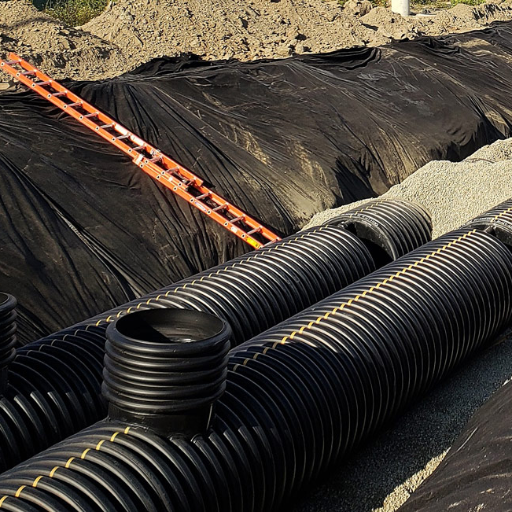
I consider modular ways of treating stormwater to be of great efficacy and sustainability. When permeable paving is combined with modular systems, the resulting infiltration rates will be higher whilst urban water management will be carried out more efficiently. Besides these are real-time monitoring systems which help gather data vital in flood prediction and resource optimization, placing them at the heart of modern urban design.
Developments in Underground Stormwater Storage
Innovations in underground stormwater storage have recently been manifested toward exceptional efficiency in urban flood control and water management systems. Among the major advantages is the utilization of modular plastic storage units-they are light and easy to set up. The update sets these systems as capable of storing thousands upon thousands of gallons within a fraction of a footprint. Considering a typical modular tank system, its storage capacity is approximately 95% of the total excavation volume, rendering it much more efficient than traditional gravel infiltration systems that store only 30-40% of their excavated volume.
Further improvements include operationalization of smart monitoring systems in the stormwater storage units, able to maintain real-time monitoring status for water levels, flow rate, and quality of water. Based on a recent case study in a major metropolitan area, cities utilizing smart systems for stormwater management had a 25% reduction in occurrences of flood incidents compared to other cities employing more traditional technologies. These systems also provide for predictive maintenance and are highly optimized for usage in adverse situations of high rainfall, thus ensuring communities become more prepared for extreme weather scenarios.
The subterranean public space has also been developed as modern green infrastructure to work alongside urban green spaces. Through the integration, cities are not only dealing with the excess water but also helping in recharge of groundwater and enhancing urban biodiversity. These multifaceted solutions reinforce the important role of advanced technologies and designs in building resilient and sustainable cities.
Innovative Infiltration Solutions
Using cutting technologies and data, these infiltration systems are designed to improve the urban water management system. For example, permeable pavements have become one of the most widely used options that let water efficiently move through surfaces, thus mitigating stress on stormwater systems. As per the Environmental Protection Agency report in 2023, permeable surfaces reduce runoff by up to 80%, thereby greatly decreasing opportunities of flooding in paved areas of the city.
Moreover, smart infiltration systems equipped with IoT properly monitor the water flow in real-time and supply concrete information about water levels, saturation levels of soil, and any blockages that allow for prediction of maintenance or more efficient distribution of water. According to Smart Cities World, smart infiltration networks, as reported in mid-2023, increase the efficiency of operations by 30% while dropping maintenance costs by 20%.
Furthermore, bioretention solutions like rain gardens and bioswales are slowly being integrated into urban planning strategies. Conservation organisms against these systems passively suppress pollutants, and they enhance city appearance and biodiversity. According to the Journal of Environmental Management, bioretention kills 90% of heavy metals and 70% of nutrients in runoff, demonstrating its importance to the environment.
The investments attest to the growing realizations about these infiltration solutions. All over the world, cities are increasingly prioritizing such technologies to face climate challenges and build sustainable urban settings.
Case Histories of Successful Stormwater Management Systems
- Thornton Creek Water Quality Channel, Seattle, USA
Seattle implemented the Thornton Creek Water Quality Channel as part of its redevelopment efforts in the Northgate neighborhood. This innovative stormwater management project treats runoff from 680 acres of urban area and reduces pollutants by up to 60%. The channel uses vegetation and meandering streams to capture, filter, and naturally treat stormwater, preventing contaminants such as oil and heavy metals from entering the local watershed. In addition, the area has been converted into a green space that benefits both the environment and the community.
- Hammarby Sjöstad, Sweden
Hammarby Sjöstad is an eco-district in Stockholm for its elaborate stormwater management system. Rainwater is gathered and treated to reduce runoff via green roofs and biofiltration, while simultaneously providing decent insulation for the buildings. According to local environmental reports, the system lowers nutrient pollution by almost 50% in nearby water bodies. The district’s current water purification standards demonstrate that with smart urban planning, sustainability and urban living can be harmoniously blended.
- Singapore’s ABC Waters Program
Singapore launched the Active, Beautiful, Clean (ABC) Waters Program to address its water sustainability challenges. The initiative integrates bioretention systems, rain gardens, and constructed wetlands into urban landscapes. One highlight is the Bishan-Ang Mo Kio Park, where a concrete canal was converted into a naturalized river system. This transformation enhanced biodiversity, supported flood resilience, and improved water quality. Studies have documented increases in dissolved oxygen levels and major decreases in sediment and nutrient loads in the treated water.
- Urban Green Infrastructure, Melbourne, Australia
Melbourne has gone to great lengths to attempt to reduce urban runoff through its green infrastructure program with features such as permeable pavement, underground tree infiltration systems, and rainwater tanks. With its comprehensive commitment to water-sensitive urban design, the city claims to have reduced stormwater pollutants by 90% and improved the health of major waterways such as the Yarra River. Melbourne also intends to harvest and reuse 325ML (million liters) of stormwater per year as a means of reducing demand for potable water.
These examples demonstrate that well-designed and innovative stormwater management systems greatly enhance environmental outcomes and strengthen the urban framework.
Environmental Benefits of Stormwater Management
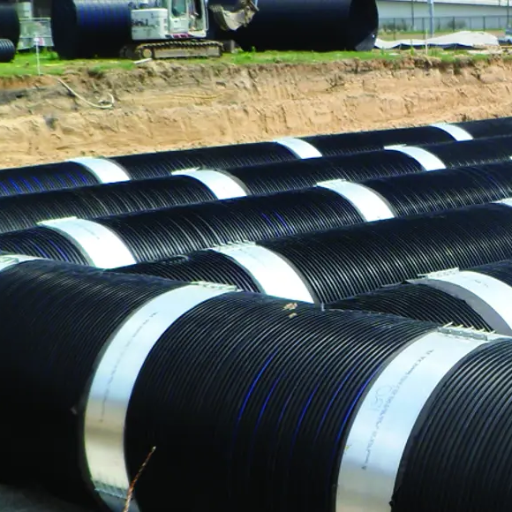
However, I feel the environmental benefits of stormwater management have always been apparent. Through effective stormwater management systems, there are opportunities to reduce pollutants in the water bodies and improve water quality, while on the other hand, promote sustainable practices like stormwater harvesting. This process will be beneficial to ecosystems and at the same time enhance urban resilience.
Reducing Urban Runoff and Pollution
Urban runoff caused mainly by impervious surfaces such as roads, parking lots, and buildings acts as a carrier for pollutants such as oil, pesticides, sediments, and heavy metals, draining into waterways. According to the Environmental Protection Agency (EPA), pollutants from stormwater runoff rank among the top causes of water pollution in urban areas. Implementing green infrastructure solution such as permeable pavement, vegetated swales, and green roofs can reduce surface runoff because water infiltrates naturally.
Studies suggest that depending on design and climate, permeable pavements can reduce runoff volume by up to 80%, while green roofs may retain 50-80% of precipitation. Rain gardens and bioswales can also filter out pollutants, lowering nitrogen and phosphorus concentrations in stormwater by almost 85%. In other words, the reduction in pollutant runoff volume along with heavy pressure being taken off traditional stormwater systems will lessen urban floods and give sustenance to a stressed ecosystem.
Improving the Local Ecosystem with Retention
In retention, stormwater management strategies mitigate the impacts of retention from their full on the local ecosystem and enhance it considerably. With the help of green infrastructure, including wetland restoration, urban forests, and retention ponds, communities nurture biodiversity and provide habitats for various species. A retention wetlands system, for instance, will soak up to 1.5 million gallons of water per acre and act as natural sponges while offering shelter to aquatic plants and animals. Conversely, urban forests who engage in interception can handle as much as 60% of the rainfall, thereby reducing runoff and enhancing air quality through pollutant filtration, which includes carbon dioxide and fine particulate matter.
Retention ponds, one of the most important mechanisms of stormwater control, enhance water quality by settling out sediment and absorbing nutrients before the water enters natural waterways. These ponds also attract wildlife that promotes ecological balance in urban and suburban settings. Moreover, studies reveal green spaces around retention mechanisms may enhance pollinator populations, critical in supporting native plants and food crops.
Incorporating such solutions aids the environment and promotes community wellbeing by developing engaging, sustainable living spaces. Designing cities with nature-based retention systems is a viable strategy to combat stormwater problems and foster environmental resilience.
Long-term Sustainability and Climate Resilience
Developing long-term sustainability and climate resilience would necessitate having a deep understanding of environmental patterns deemed essential and conversely adopting innovative solutions being data-driven. As per the reports done recently, the urban areas could see a 77% increase in extreme rainfall events worldwide by the century’s end owing to climate change. This indeed punctuates the need for having efficient stormwater management systems coupled with green infrastructure to induce flooding risks.
To name but a few, green roofs are increasingly gaining popularity as they reduce stormwater runoff by up to 65% in some climates. On the other hand, permeable pavement systems, by allowing water infiltration, can reduce the volume of surface waters by about 90 percent when compared to asphalt. Urban forests and greenways further help with water retention while also cooling down cities by as much as 5 °F (2.7 °C), thus easing the urban heat island effect.
These initiatives are further encouraged by modern monitoring and technology, such as sensors with IoT integration, which allow real-time data on water flow and storage capacity in retention systems. By using these technologies, cities would be able to organize their adaptation efforts in response to the new weather scenarios so that their investments into infrastructure will stand the test of time. An integration of nature-based solutions with high-tech innovation is what opens the door to improved environmental resilience and sustainable urban development.
Cost-Effectiveness and Challenges
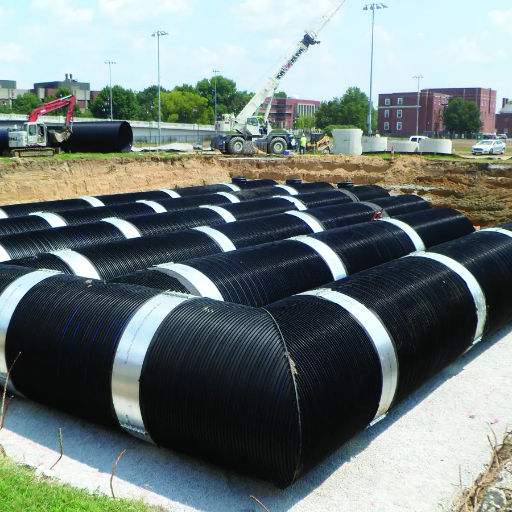
From the perspective of cost-effectiveness, I consider that synergy between nature-based solutions and technological innovations yields tremendous benefits in the very long-run. Despite seemingly high upfront costs of implementing IoT-based systems or design and build of green infrastructure, maintenance costs are lowered down the lane, thus providing greater resilience to climate change. The key challenge that comes up is how to weigh upfront costs with future savings and come up with funding schemes that support implementation.
An Economic Analysis for Stormwater Detention Systems
Stormwater detention systems assume the most important role in urban water management, while the systems are said to have the benefits of the environment and economy. Based on recent data, these systems help cut costs incurred due to flooding damages; in the USA, these damages cost around $8 billion on average yearly. Moreover, new stormwater detention systems, coupled with green infrastructure like bioswales or rain gardens, are found to lessen the pressure on city sewage systems, thereby gradually cutting down on the maintenance costs.
According to a 2023 market report, the global demand for stormwater management solutions shall grow at a CAGR of 7.2% between 2023 and 2030, hinting a growing market for sustainable infrastructure. With smart monitoring systems powered by IoT technology, cities stand to not only improve the level of performance but also reduce the cost of operations by up to 20%. From the cost-benefit perspective: Although the initial costs are high, approximately ranging from $50,000 to $150,000 per acre based on different designs, they help communities by reducing hazards, enhancing water quality, thereby translating to far-reaching benefits from expensive infrastructure repair.
Its stormwater detention systems also enhance property values as well as community resilience towards climatic change impacts. A compounded approach integrating public funds, private partnerships, and newly conceived designs could accompany maximized economic, environmental returns, and sustainable urban development.
Potential Implementation Challenges
Despite the benefits of detention systems for stormwater, there may still exist several challenges during installation. The high initial costs for designing, constructing, and permitting can constitute an inhibitor to one of these. Recent industry reports state that the cost for a large-scale detention system can vary between $100,000 and over $1 million, depending on scale and urban location. In securing finances, a significant impediment for municipalities may especially present itself in highly populated areas.
Further, the maintenance costs also affect the system. Optimal functioning of the system requires inspection, debris removal, and repairs. Studies show that maintenance costs could go up to 10-20% of the initial installation costs per year, thus exerting further pressure on already stretched municipal budgets. In addition, adequate training and resources must be set aside to allow maintenance teams to fully carry out their duties.
There are regulatory and spatial barriers as well. Being compliant with local and federal environmental regulations on runoff and water quality can elongate the duration of a project and add layers of complexity thereto. Urban locations with little land available could encounter serious difficulties integrating detention systems without displacing already established infrastructure or current development projects. Balancing these challenges with the attainments of environmental and economic gains of stormwater detention systems requires holistic planning and cooperation across sectors.
Reference sources
1. A Practical, Adaptive, and Scalable Real-Time Control Approach for Stormwater Storage Systems
- Authors: Rui Liang, H. R. Maier, M. Thyer, G. Dandy
- Journal: Water
- Publication Date: October 7, 2024
- Citation: (Liang et al., 2024)
- Summary:
- This paper introduces the Target Flow Control Systems (TFCS) approach, which utilizes real-time control of stormwater storage systems to optimize flow conditions without needing calibration to specific catchment data.
- Key Findings:
- The TFCS approach is applicable across various catchments and can adapt to changes in runoff due to land use or climate change.
- It requires only real-time storage-level data, making it practical and easy to implement.
- The study includes three case studies with different configurations and management objectives, demonstrating the TFCS’s superior performance and practicality compared to five other RTC approaches.
- Methodology:
- The paper compares multiple RTC approaches through case studies, focusing on performance metrics and practicality.
2. Adapting to Future Changes Using Smart Stormwater Storage Systems to Preserve Flow Regimes
- Authors: Rui Liang, M. Thyer, H. R. Maier, G. Dandy, Emily Z. Berglund
- Journal: Journal of Hydrology X
- Publication Date: June 1, 2025
- Citation: (Liang et al., 2025)
- Summary:
- This study discusses the adaptation of stormwater storage systems to future changes, emphasizing the importance of maintaining flow regimes.
- Key Findings:
- The research highlights the need for smart systems that can respond dynamically to changing environmental conditions.
- It emphasizes the role of technology in enhancing the resilience of stormwater management systems.
- Methodology:
- The paper employs a review of existing literature and case studies to analyze the effectiveness of smart stormwater systems.
3. Potential Benefits of Real-Time Control to Reduce Urban Flooding Using Distributed Smart Stormwater Storage Systems
- Authors: Rui Liang, M. Thyer, H. R. Maier, M. Di Matteo, G. Dandy
- Publication Date: March 3, 2021
- Citation: (Liang et al., 2021)
- Summary:
- This paper explores the potential of real-time control (RTC) systems in urban flooding mitigation through distributed smart stormwater storage systems.
- Key Findings:
- RTC systems can significantly enhance the capacity and efficiency of existing stormwater infrastructure.
- The study suggests that smart storage solutions can be a cost-effective alternative to traditional infrastructure upgrades.
- Methodology:
- The research includes a comparative analysis of RTC systems and their impact on urban flooding, supported by case studies.
Frequently Asked Questions (FAQs)
What Are Stormwater Detention Systems?
Stormwater detention systems are engineered means for temporarily holding the runoff of excess stormwater during rainfall. Detention systems manage stormwater efficiently to maximize flooding and erosion hazards and to enable a more gradual release of water to either the local environment or drainage systems.
How Do Underground Stormwater Detention Systems Work?
The underground stormwater detention system makes use of the subsurface of chambers for storing massive quantities of stormwater runoff. During heavy rainfall, these systems are used to capture and store stormwater, which is then slowly released to avoid local drainage systems from being overwhelmed and to lessen the impact on the groundwater table.
What Are the Benefits Stormwater Management Practices Impose?
By implementing efficient stormwater management practices, including modular stormwater systems, water quality can be substantially increased through filtration of contaminants. Besides moderating stormwater quantity, these systems are designed to restrict the adverse impacts on natural water bodies. Furthermore, these practices adhere to standards put forward in a stormwater management plan and all related regulations.
What Role Do Infiltration Systems Play in Stormwater Management?
Infiltration solutions are used for the treatment and management of stormwater; they allow for the absorption of stormwater into the ground. Infiltration would help recharge groundwater and reduce runoff volume, thus counteracting the effects of severe downpours in lands with very limited availability.
How Do Stormwater Retention and Detention Differ?
Stormwater retention means holding water for a considerably long time interval to infiltrate into the ground or serve as part of rainwater harvesting systems. Detention means holding water temporarily before releasing it gradually. Both techniques are equally important for effectively handling stormwater runoff.
What Are Modular Stormwater Systems?
Modular stormwater solutions refer to small, stackable options for stormwater storage that offer superb flexibility and efficiency. These ingenious solutions can be embedded in different landscapes, thereby making them an ideal solution for urban areas where land area is so precious and limited. They can be customized to suit specific stormwater management targets.
What Maintenance are Required for Underground Stormwater Storage?
Under stormwater detention, underground storage installations will require regular inspection by maintenance crews to determine their optimal pretension performance. This will include checking for sediment accumulation, verifying outlet pipes’ integrity, and ensuring adequate access for clean-out operations. Proper maintenance definitely increases the life span of these installations.
How Do Stormwater Detention Systems Help to Enhance Water Quality?
These systems are designed to detain stormwater runoff from the catchment area, which usually carries a heavy pollutant load. The longer detention time allows the sediments in wastewater to settle down. This detention coupled with natural filtration allows the stored water to be of better quality when it is released back into the environment.

